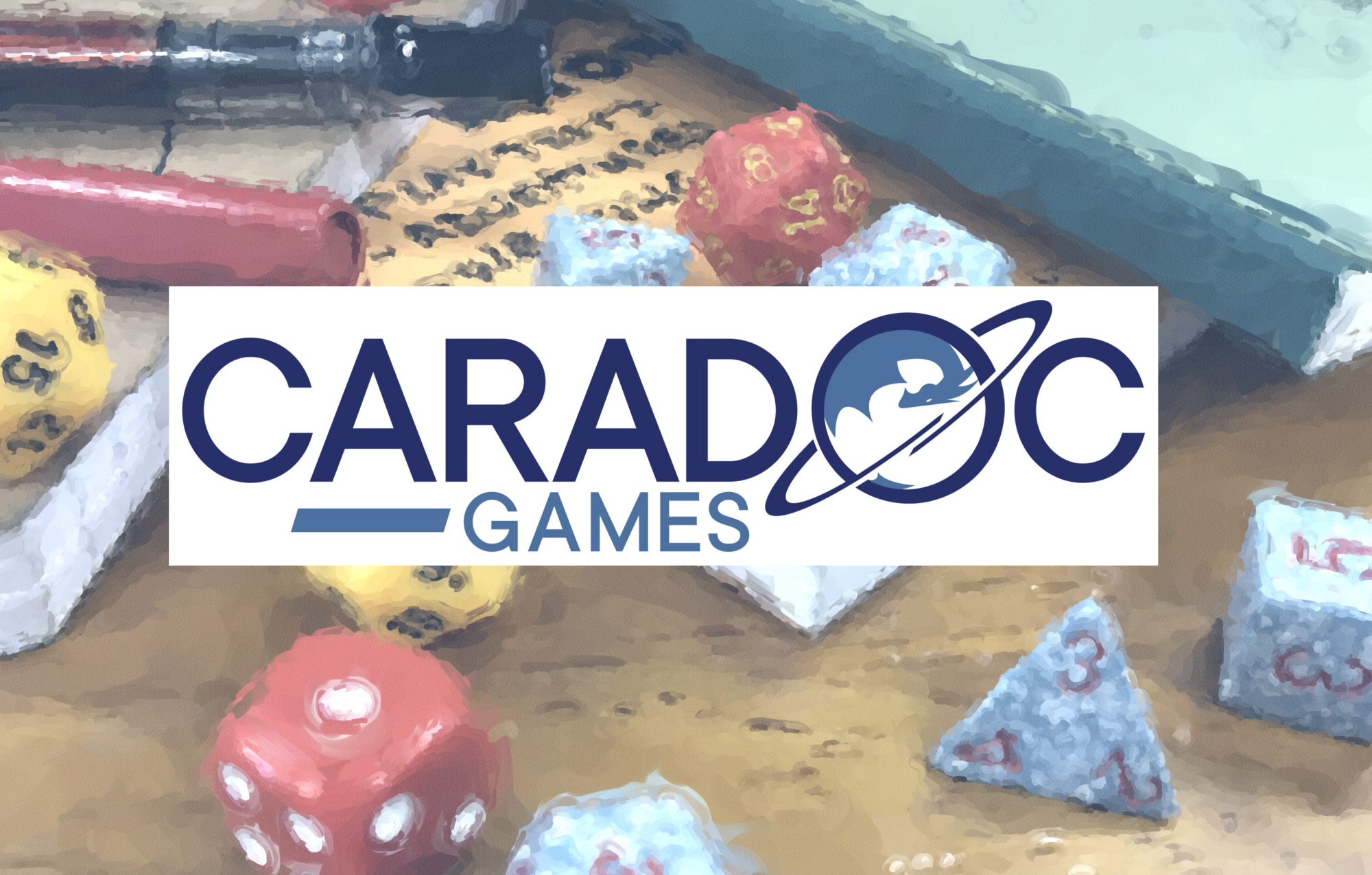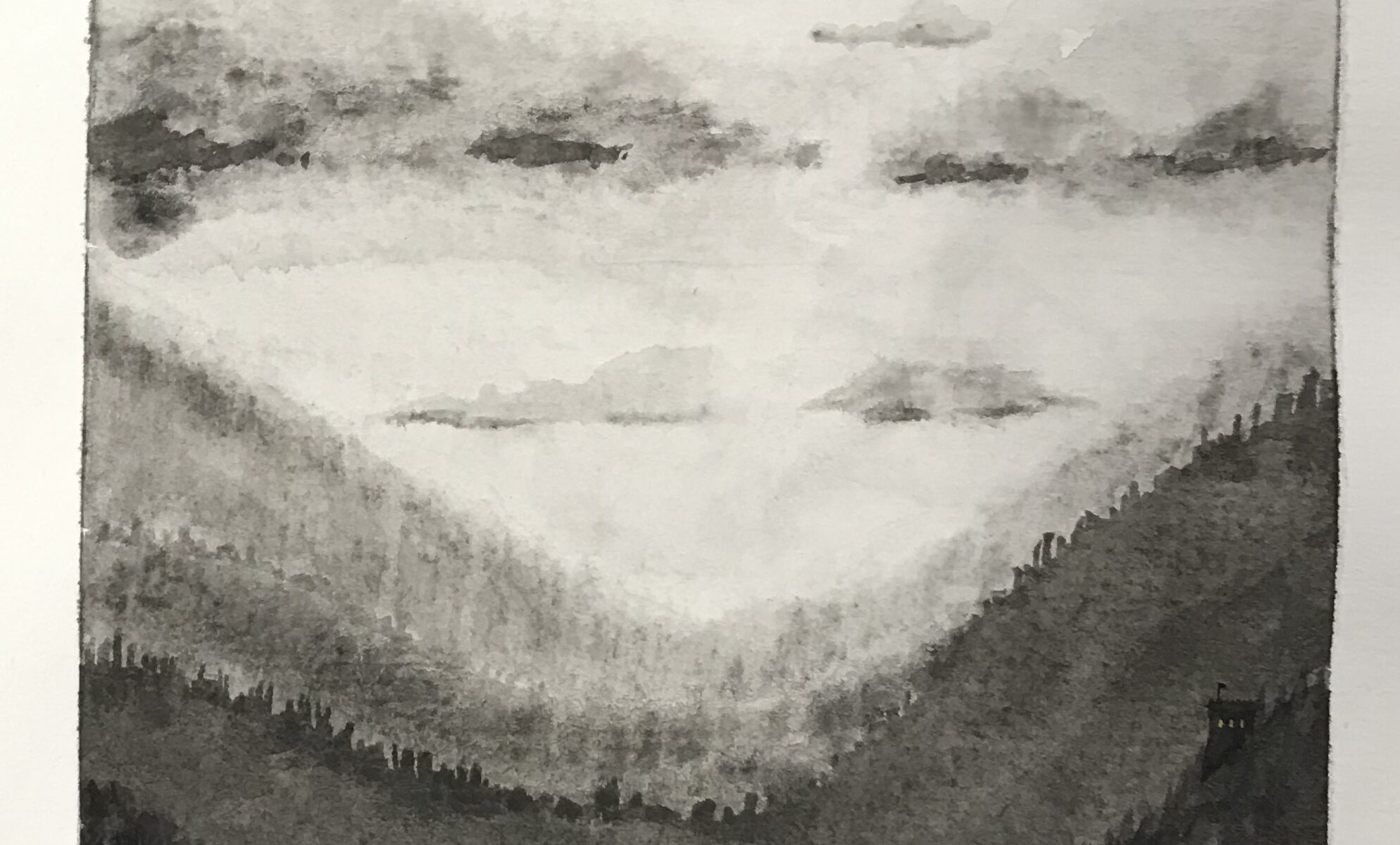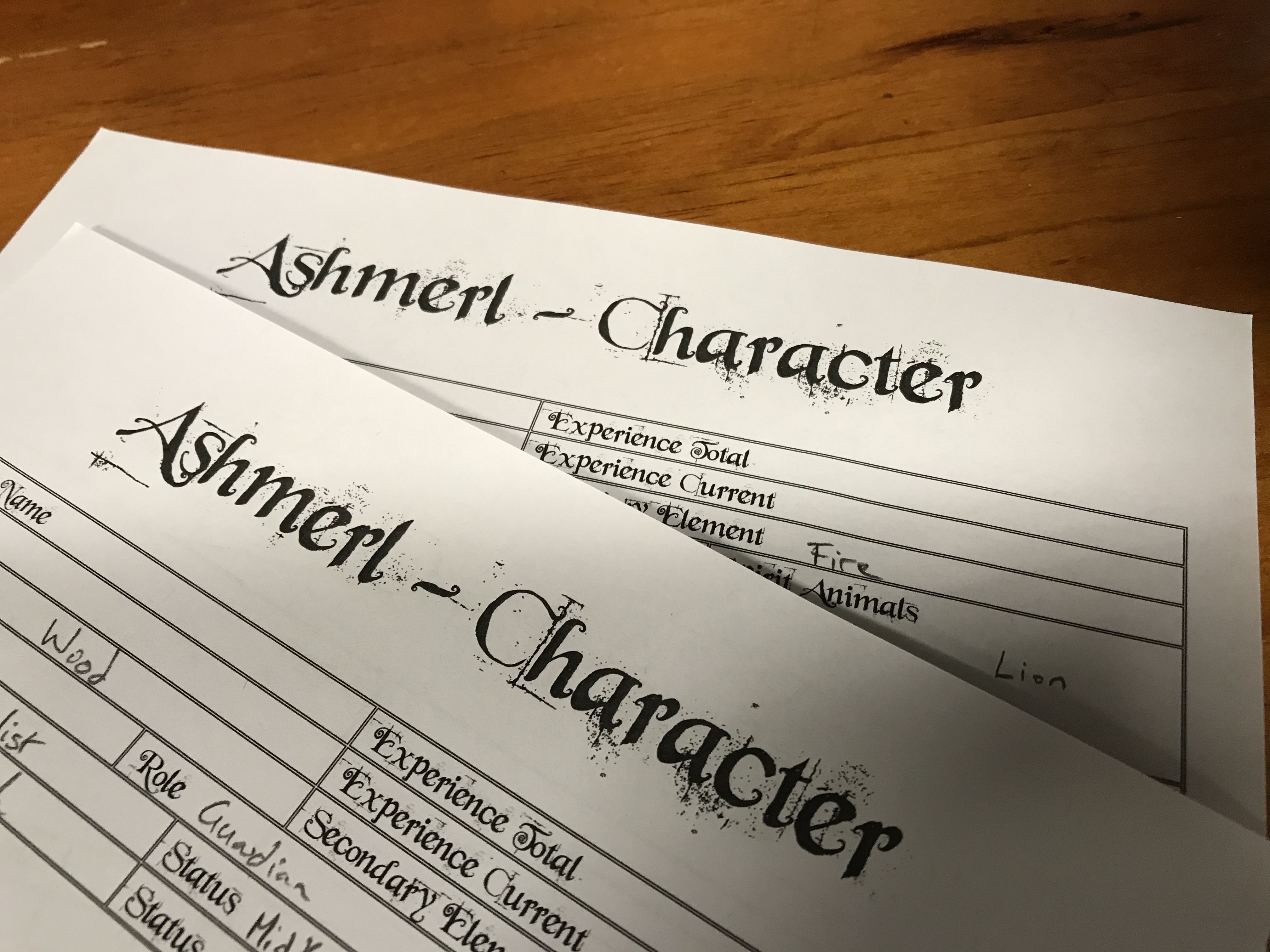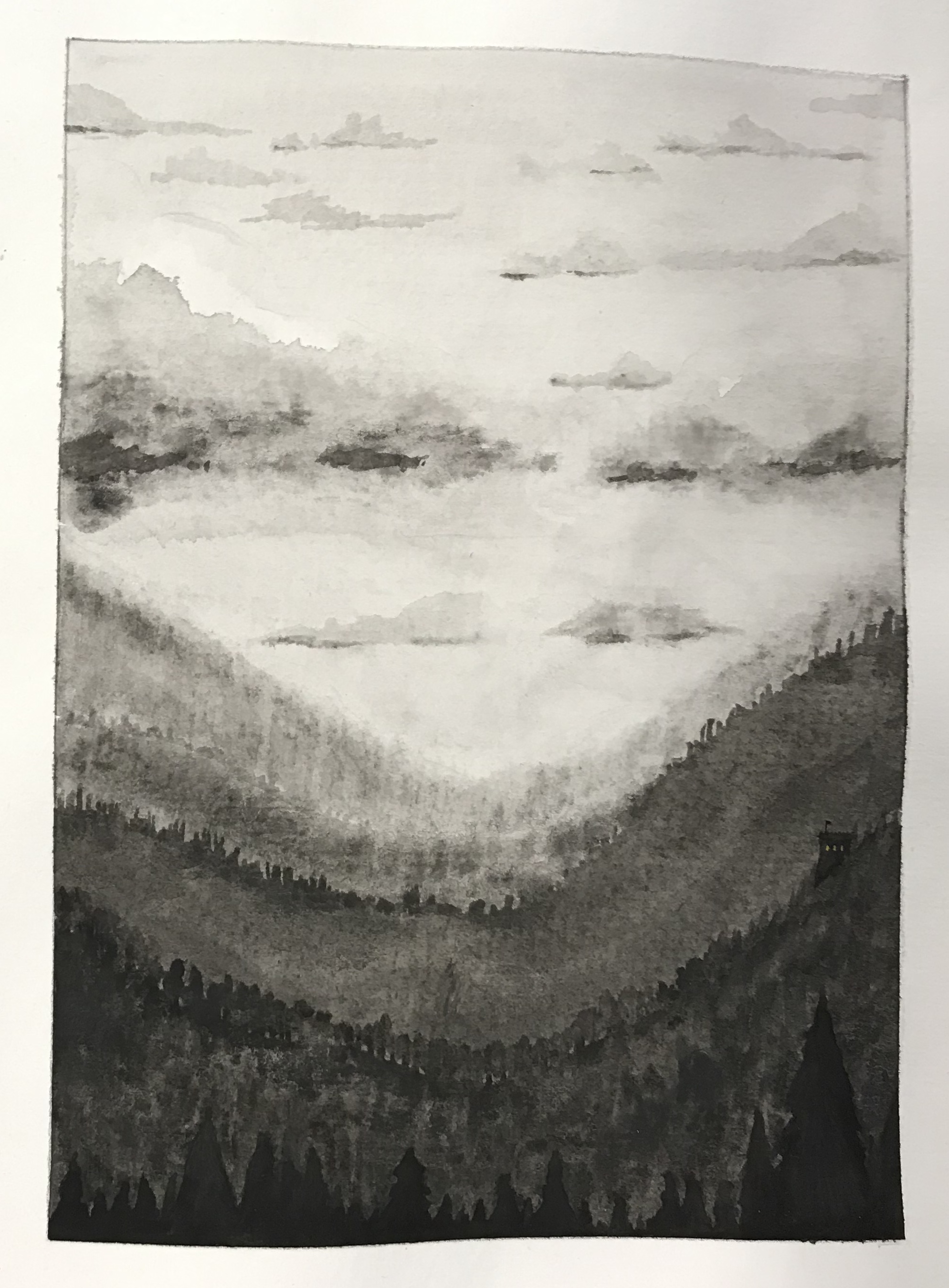My fantasy RPG, Ashmerl, is coming along apace, I wrote previously about the ease with which a rules system can grow and develop, how one thing can lead to another, and the entirety can be left bloated. An obvious solution is to test, test, and test some more, then cut, cut, and cut some more. The main thing I am testing at the moment is the character creation system.

In Ashmerl, players create both their characters, and the place the character are from. In this way players and the GM together create the protagonists for their story, as well as their own slice of the setting. The aim of all of this is for the characters to enter play with a back story and a context, with drivers and motivators, with things and people they already know, facing dangers and threats they are familiar with. It is my vague hope that playgroups will, through this process, end up with enough material to fuel the first few adventures, or even the first leg of a prolonged campaign.
So many little pieces can lead to rules creep, so testing and testing and testing is the key to seeing how it flows. At the moment I’m still in the development phase, fleshing out and honing ideas into written rules. The testing so far has largely been done in-house, so to speak. With my own playgroup willingly (well, I hope) humouring me by putting up with repeated character generation sessions. I’ve done this a few times now, and I am broadly happy with what I have. The next stage is the trickier part, it’s where the rubber hits the road, it’s time to test the dice system…
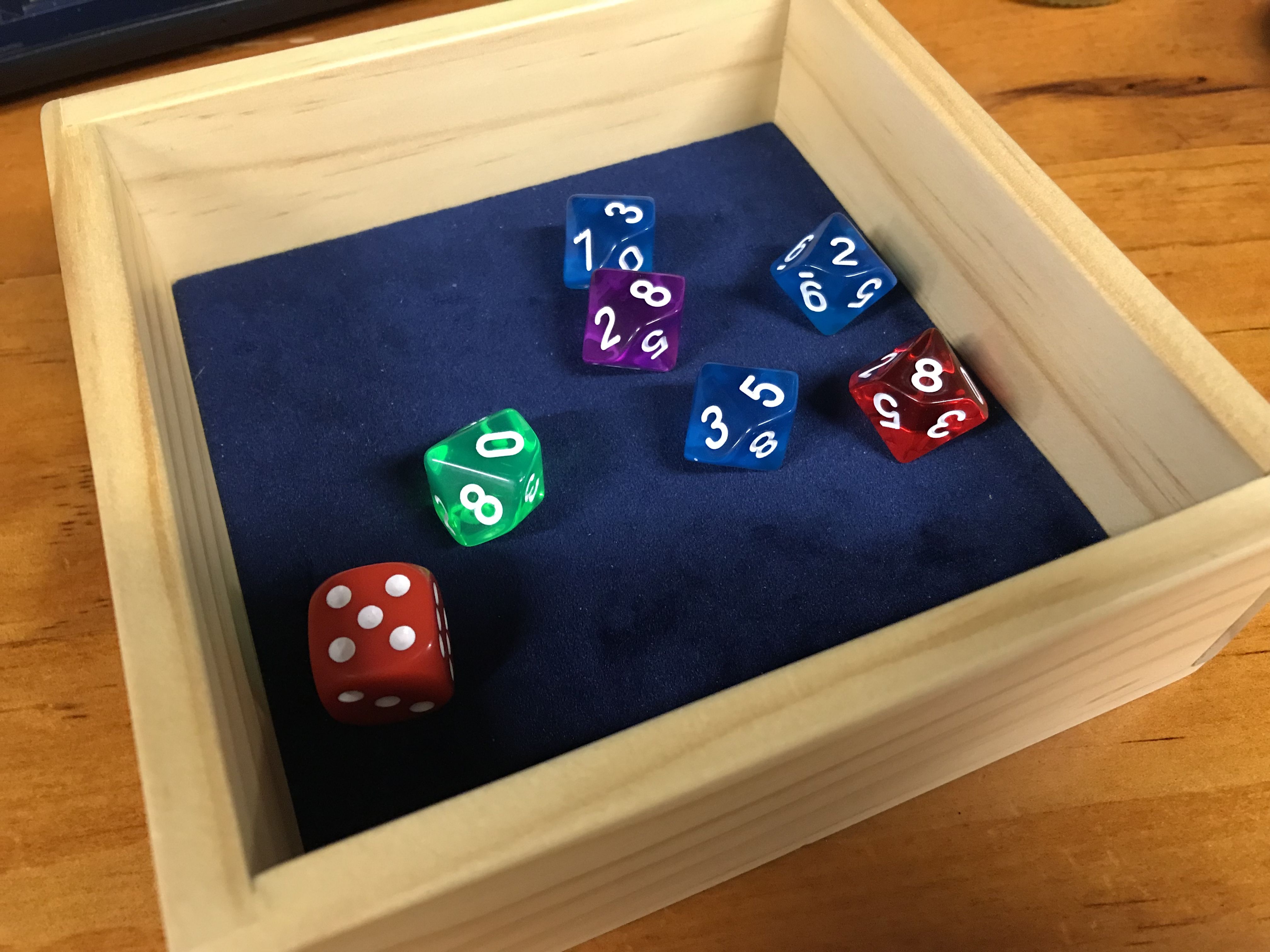
Having run through some test scenarios myself, and burned through eight or nine different ideas for dice systems over the last four months, I think I have settled on a system that works the way I would like it to. Testing such systems in solitary is only so useful though, so the next test session we run here will be a simple trial adventure, to see how skill test resolution and conflict resolution all fit together in the heat of the moment.
I have questions… Are there too many little things? Has the rules creep gone too far? Is it lacking in options, or not have enough? Is the complexity all in the wrong places? Does the dice system actually work? Does it need to change to something else? Do the other systems, the in-game GM-Player currency system for example, add to the game or impede the flow? Does the actions/rounds/turns/time and timing system in the game work? So many more.
I need to create some enemy stat blocks, pull together a simple encounter, and let nature run it’s course. No doubt many things will have to change, they always do, but that’s what testing is all about.
Looking ahead… once this round of testing is through, and I feel like the dice system is functional (if not well balanced yet), then the time will come for another leap… Finding people to test externally, asking friends and contacts to have a look and see what they think, to poke holes and break the game. I have a few people lined up, who have been kind enough to offer, but I need to jump a few more hurdles yet. With every test session down the list of bullet points of things that need to be done seems only to grow, in time this will turn around, but for now it’s onward.
It feels like the path is getting harder and more arduous, there are more barriers and rougher terrain than I could see from my cosy little Hobbit hole, where it all began. But the road ahead is becoming clearer at least, for all the mountains yet to climb and the forests left to explore. I can envisage my destination, even if it is still shrouded in the distance, with many lands have yet to be crossed. But I have a path forward, so I must bow my head, tighten my belt, and get on with getting on.
